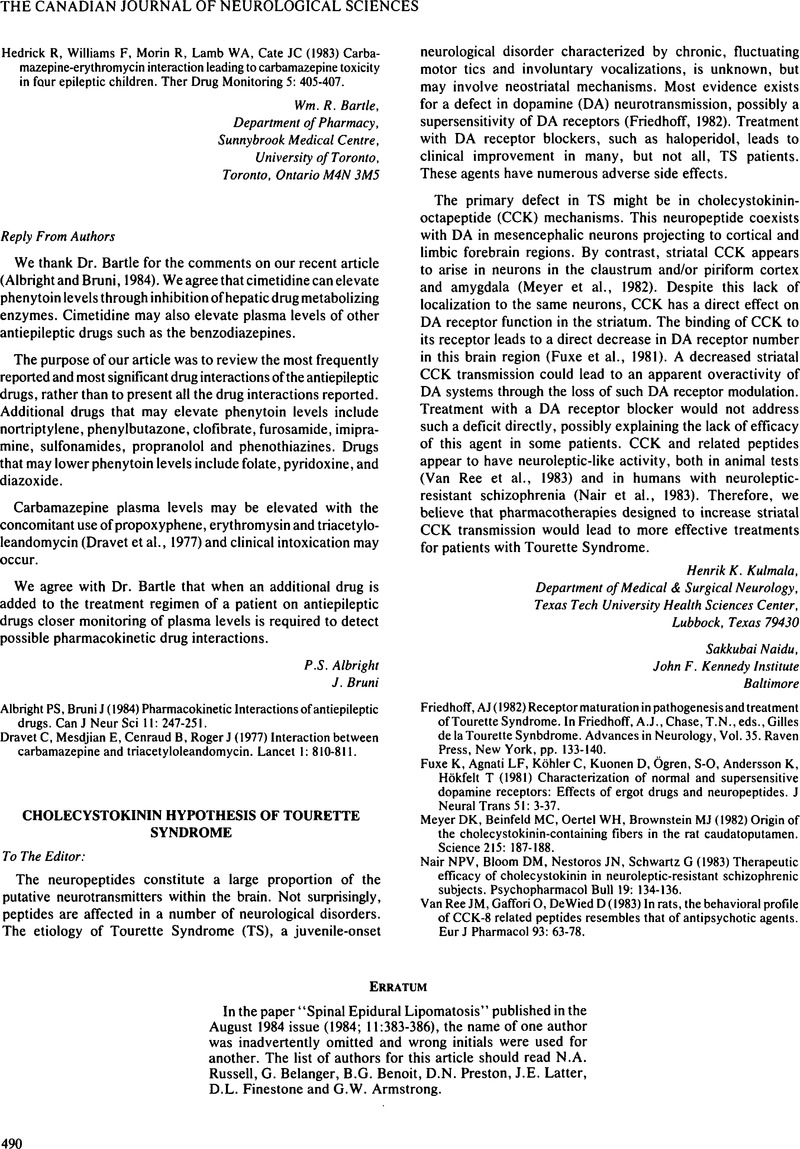No CrossRef data available.
Article contents
Cholecystokinin Hypothesis of Tourette Syndrome
Published online by Cambridge University Press: 18 September 2015
Abstract
An abstract is not available for this content so a preview has been provided. As you have access to this content, a full PDF is available via the ‘Save PDF’ action button.

- Type
- Correspondence
- Information
- Copyright
- Copyright © Canadian Neurological Sciences Federation 1984
References
Friedhoff, AJ (1982) Receptor maturation in pathogenesis and treatment of Tourette Syndrome. In Friedhoff, A.J., Chase, T.N., eds., Gilles de la Tourette Synbdrome. Advances in Neurology, Vol. 35. Raven Press, New York, pp. 133–140.Google Scholar
Fuxe, K, Agnati, LF, Köhler, C, Kuonen, D, Ögren, S-O, Andersson, K, Hokfelt, T (1981) Characterization of normal and supersensitive dopamine receptors: Effects of ergot drugs and neuropeptides. J Neural Trans 51: 3–37.CrossRefGoogle ScholarPubMed
Meyer, DK, Beinfeld, MC, Oertel, WH, Brownstein, MJ (1982) Origin of the cholecystokinin-containing fibers in the rat caudatoputamen. Science 215: 187–188.CrossRefGoogle ScholarPubMed
Nair, NPV, Bloom, DM, Nestoros, JN, Schwartz, G (1983) Therapeutic efficacy of cholecystokinin in neuroleptic-resistant schizophrenic subjects. Psychopharmacol Bull 19: 134–136.Google Scholar
Van Ree, JM, Gaffori, O, DeWied, D (1983) In rats, the behavioral profile of CCK-8 related peptides resembles that of antipsychotic agents. Eur J Pharmacol 93: 63–78.CrossRefGoogle ScholarPubMed


